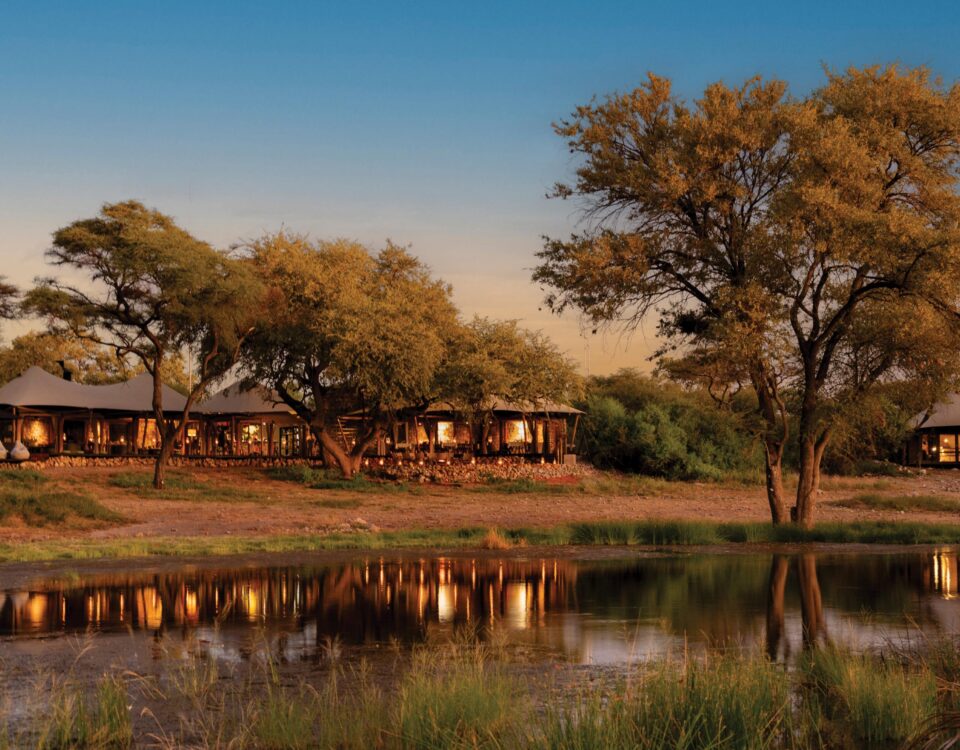Swakopmund Museum
August 31, 2012Etosha Safari Lodge
August 31, 2012by Peter Bridgeford
When driving to Sossusvlei, you cross the Tsauchab River, but unless it’s coming down in flood, most visitors hardly notice it in their lemming-like rush to get to the pan.
Over millennia, this river that feeds Sossusvlei also incised the Sesriem Canyon. We know the river ends in the dunes, but where does it come from? The best way to find its origin is by doing a Dr Livingstone and exploring the hinterland. If you drive upstream from Sossusvlei, figuratively rather than literally, you’ll come near to the source.
Highways and byways
Flanked by the Zaris and Naukluft mountains, in a wide river valley between these two mountain ranges, the Tsauchab River is born. On your journey of discovery along the district road, D854, approaching from Sesriem on the C19, you cross this river again. From Windhoek, you travel over Büllsport on the C14 to get onto the D854. From whichever direction you approach, the jagged Naukluft (narrow gorge) Mountains are to the north, with the flat-topped Zaris mountain range to the south. The area appears dry and deserted, except for the occasional farmhouse close to the road, reminiscent of bygone days when travellers on horses and other animal-drawn transport stopped at each farm to gossip, water and rest their draught animals.
Stunning geological formations
Your destination, Tsauchab River Camp on the farm Urikos, is at the junction of the D854 and D850. Before you pitch your camp, drive south along the D850 to the top of the pass. The geological formations are stunning. Below the peaks of the Zaris Mountains – formed by the deposition of sediments in a shallow sea many millions of years ago – you look down onto a network of gorges carved out of the rock. Over the centuries, raging torrents of the Tsauchab River and its tributaries eroded this valley. The farm here is appropriately named Donker Gange (dark passages).
At Urikos, along the ephemeral Tsauchab River, there are 14 campsites and four chalets. But don’t expect a river flowing from bank to bank. After all, you’re on the edge of the Namib. We had a look at several sites. Oerwald Camp, which has running water, was the most appealing. Perhaps this should be clarified; most campsites have hot and cold water, but not all have pools of water burbling along over the rocks beneath giant wild-fig trees. This wild-fig-tree forest must rank as one of the biggest in the country.
As campers, what we appreciated about Tsauchab River Camp was the exclusiveness of each site. There’s no sharing of ablution facilities and noisy neighbours will not destroy your peace. Even overlanders, the bane of many campers, are catered for, but you won’t see or hear them. The sites are far apart and the ablution and wash-up facilities spotless, with some built into the huge wild-fig trees. For more timid campers, there are sites close to the reception area, where owners Johan and Nicky Steyn can keep a watchful eye over you. Another innovation is that some campsites have bungalows nearby.
Older people in your group can have the comfortable accommodation, while the younger set and children can pitch their tents, or as many Namibians do, roll out their bedrolls beneath the stars. There is also a restaurant (you need to make a reservation though) and a small shop where basic foodstuffs and interesting books are available. If you don’t want the hassle of wrestling with your tent, you can always make use of the tented camp, complete with beds and bedding, that’s situated in a large grove of shady, false-ebony trees. The camp is eight kilometres from the main reception area, but has a manager living on site to look after your needs.
Activities
For the energetic types, there are two hiking trails to keep you out of mischief. For more sedentary visitors, who enjoy their exercise from behind the wheel of a vehicle, the 4×4 trail will tire you sufficiently to enjoy your easily earned beer and barbecue. For birdwatchers, the varied habitats on the farm result in an impressive list, including endemics such as White-tailed Shrike and Herero Chat.
 This article was made possible by Cymot Namibia
This article was made possible by Cymot Namibia
This article appeared in the Feb/March ‘08 edition of Travel News Namibia.



